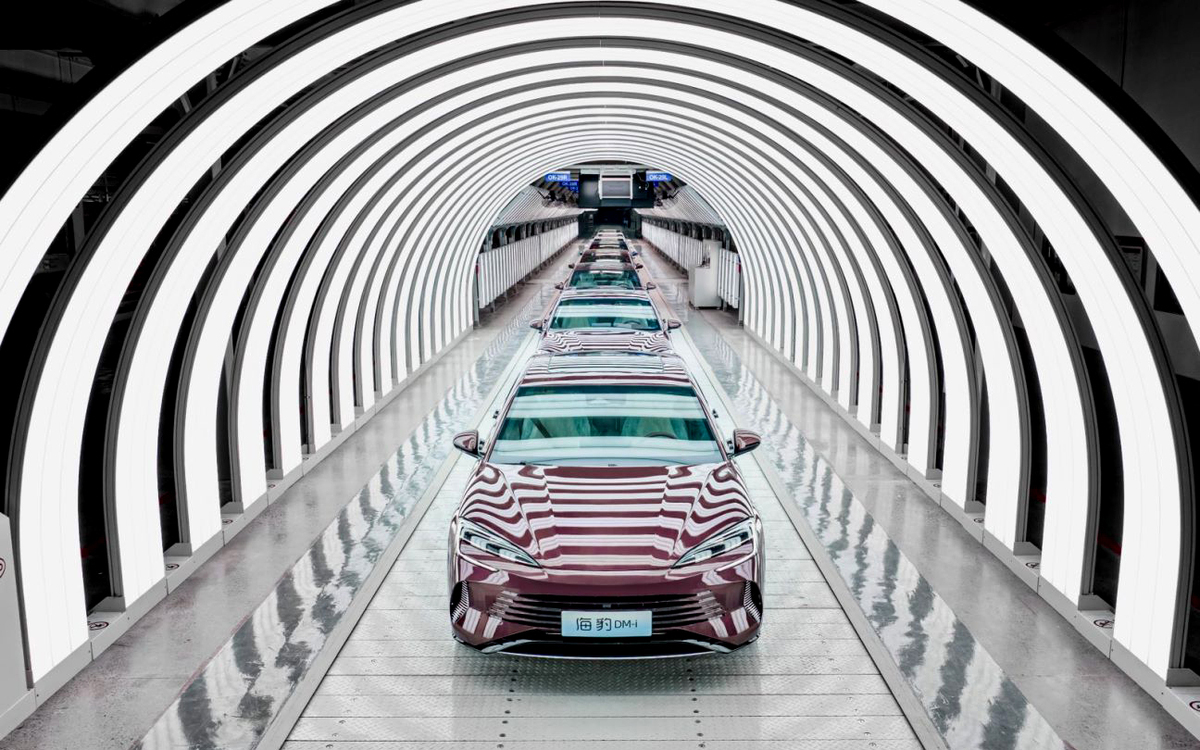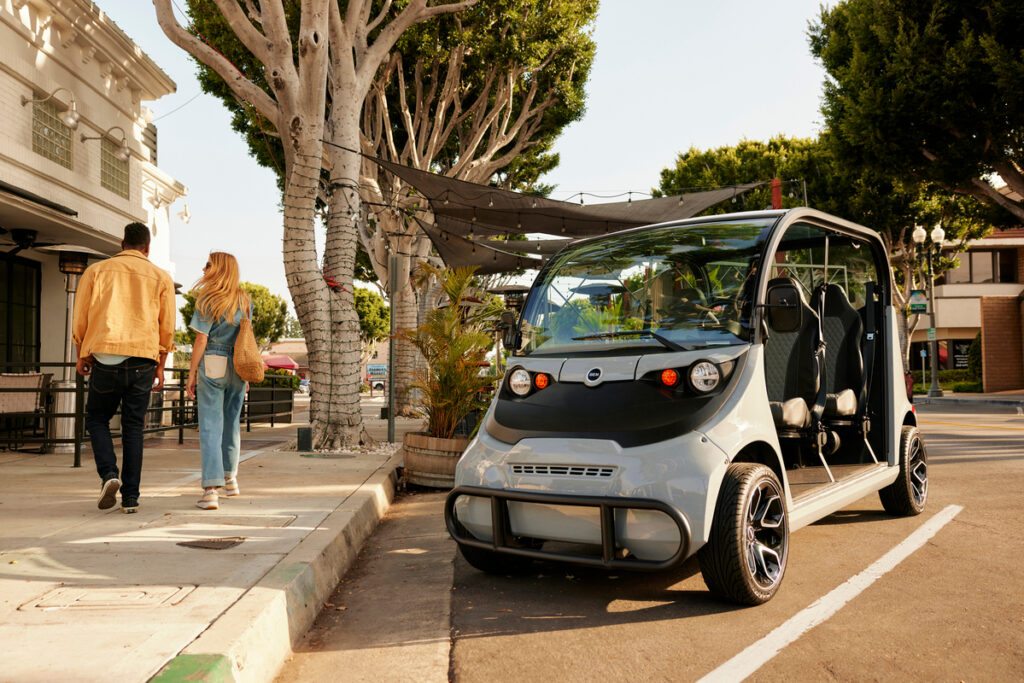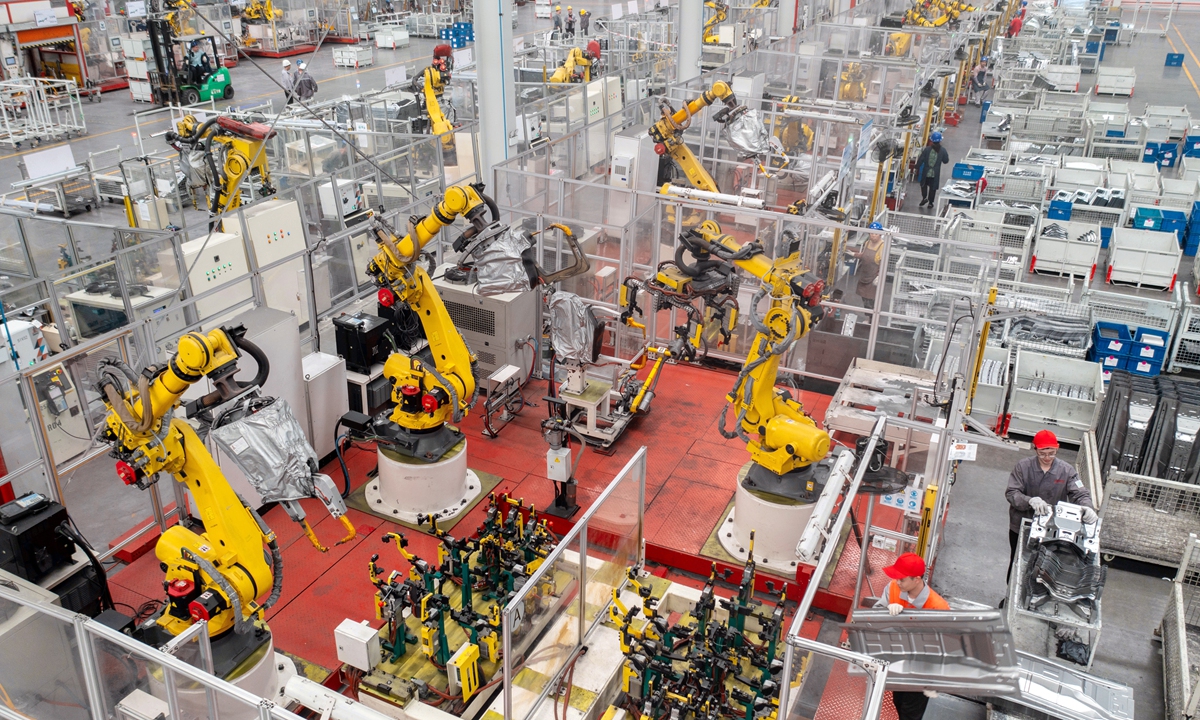Unlocking "NEV": Your Guide To Neighborhood Electric Vehicles & Beyond
In a world increasingly focused on sustainable living and efficient transportation, terms like "EV" and "PHEV" have become commonplace. Yet, you might have encountered another acronym that sparks curiosity: "NEV." What exactly does NEV stand for, and why should it matter to you? This comprehensive guide delves deep into the multifaceted world of NEVs, exploring their definitions, benefits, limitations, and the exciting advancements shaping their future, particularly the American Neighborhood Electric Vehicle.
From their specific legal classifications in the United States to their broader, impactful role in China's green energy strategy, understanding NEVs is crucial for anyone considering their next vehicle purchase or simply interested in the evolving landscape of electric mobility. We'll explore why these compact, often overlooked vehicles are gaining traction and what you need to know to make an informed decision.
Table of Contents
- Understanding NEVs: More Than Just a Golf Cart
- Why Consider a Neighborhood Electric Vehicle?
- Navigating the Legal Landscape of NEVs
- The Evolution of NEV Technology in 2024
- Choosing Your Ideal NEV: Key Considerations
- Maximizing Your NEV's Benefits: Driving and Maintenance Tips
- Safety and Sustainability: Addressing Common Concerns
- The Future of NEVs: Market Trends and Global Impact
Understanding NEVs: More Than Just a Golf Cart
The term "NEV" can sometimes cause confusion, as it refers to two distinct, yet related, categories of vehicles depending on the geographical context. It's vital to differentiate between them to fully grasp their significance in the global automotive landscape.The American Neighborhood Electric Vehicle (NEV)
In the United States, a **Neighborhood Electric Vehicle (NEV)** is a specific category for battery electric vehicles designed for low-speed, local transportation. These vehicles are characterized by their compact size and modest performance capabilities. As per American regulations, they are typically built to have a top speed of 25 miles per hour (40 km/h). Their maximum loaded weight is generally limited to 3,000 lb (1,400 kg), though this can vary slightly based on specific state laws. Legally, NEVs are restricted to roads with posted speed limits of 35 miles per hour (56 km/h) or less. In some states, this limit might extend to 45 mph, offering a bit more flexibility. This makes them ideal for gated communities, college campuses, large industrial complexes, and short commutes within urban or suburban areas where speed limits are low. They bridge the gap between golf carts and traditional cars, offering a more enclosed and often safer alternative for local travel.The Chinese New Energy Vehicle (NEV) Classification
Across the Pacific, particularly in China, "NEV" takes on a much broader meaning. Here, **New Energy Vehicle (NEV)** is a comprehensive term introduced by the Chinese government in the early 2000s and officially defined in 2009. It's part of a national strategy to combat pollution and reduce dependence on fossil fuels. In China, a New Energy Vehicle is any vehicle that does not solely rely on an internal combustion engine (ICE) for propulsion. This inclusive definition covers a wide array of vehicles, including:- Battery Electric Vehicles (BEVs)
- Plug-in Hybrid Electric Vehicles (PHEVs)
- Fuel Cell Electric Vehicles (FCEVs)
Why Consider a Neighborhood Electric Vehicle?
"Should I care about EV options while deciding my next car?" Absolutely, especially if your daily driving habits align with the capabilities of an NEV. For many, a Neighborhood Electric Vehicle offers a compelling alternative to a traditional car for specific needs. Here's why: * **Environmental Friendliness:** Like all battery electric vehicles, NEVs produce zero tailpipe emissions. This directly contributes to cleaner air in your local community and reduces your carbon footprint. While the source of electricity for electric vehicles varies (coal, natural gas, renewables), the shift to electric transport is a critical step towards a sustainable future. * **Cost-Effectiveness:** * **Fuel Savings:** Electricity is generally cheaper per mile than gasoline or diesel, especially when charging at home. * **Maintenance:** With fewer moving parts than internal combustion engine (ICE) vehicles, NEVs typically require less maintenance, leading to lower long-term costs. * **Purchase Price:** While electric vehicles can be expensive compared to ICEs, NEVs are often more affordable than full-sized EVs, making electric mobility accessible to a wider audience. * **Convenience for Local Transportation:** For short trips – grocery runs, visiting neighbors, commuting to a local office, or navigating a retirement community – an NEV is incredibly convenient. Its compact size makes parking easier, and its low speed is perfectly suited for neighborhood streets. * **Quiet Operation:** Electric motors are inherently quieter than gasoline engines, leading to a more peaceful driving experience and reduced noise pollution in residential areas. * **Access to Restricted Areas:** In some communities or campuses, NEVs might have access to areas where traditional cars are restricted, enhancing their utility.Navigating the Legal Landscape of NEVs
Understanding the legal limitations of a Neighborhood Electric Vehicle is paramount before purchase. Unlike traditional vehicles, NEVs operate under specific regulations designed to ensure safety given their lower speed capabilities. As mentioned, NEVs are legally limited to roads with posted speed limits of 35 miles per hour (56 km/h) or less, with some states allowing up to 45 mph. This means they are generally prohibited from highways, interstates, and other high-speed thoroughfares. Local agencies in California, for example, authorized by legislation in the California Streets and Highways Code and California Vehicle Code, may install signs in areas with established neighborhood electrical vehicle (NEV) transportation plans, clearly marking where NEVs are permitted. It's crucial for prospective NEV owners to: * **Check State and Local Laws:** Regulations can vary significantly from one state or even municipality to another. Before purchasing, verify the specific rules regarding NEV operation, registration, and licensing in your area. * **Understand Road Restrictions:** Be aware of which roads are off-limits. Driving an NEV on a road where it's not permitted can result in fines and safety risks. * **Insurance Requirements:** Ensure your NEV is adequately insured. While they are low-speed, accidents can still occur, and proper coverage is essential.The Evolution of NEV Technology in 2024
The electric vehicle market is rapidly evolving, and Neighborhood Electric Vehicles are no exception. Discover the latest advancements in **Neighborhood Electric Vehicle (NEV)** technology for 2024, exploring key factors that make them more appealing and practical than ever before.Battery Innovations and Range
One of the most significant advancements in NEV technology is in battery chemistry and efficiency. * **Improved Battery Density:** Modern NEVs are increasingly utilizing more energy-dense lithium-ion batteries, replacing older lead-acid counterparts. This translates to lighter vehicles, faster charging times, and crucially, extended range. While an NEV isn't designed for long-distance travel, improved range means fewer charges and greater convenience for daily errands. * **Faster Charging:** Advancements in charging technology mean that newer NEVs can often charge more quickly, reducing downtime. Some models may even incorporate features like regenerative braking, which helps recharge the battery while decelerating.Smart Features and Connectivity
Today's NEVs are more than just basic electric carts; they're integrating smart technologies that enhance user experience and safety. * **Digital Displays and Infotainment:** Many 2024 NEV models feature modern digital dashboards, touchscreen displays, and even basic infotainment systems, offering navigation, Bluetooth connectivity, and vehicle diagnostics. * **Advanced Lighting:** LED lighting is becoming standard, providing brighter illumination, consuming less power, and lasting longer than traditional bulbs. * **Safety Enhancements:** While still limited by their low-speed design, newer NEVs incorporate improved safety features such as more robust frames, better braking systems, and sometimes even basic driver-assistance features like backup cameras. * **Telematics and Remote Monitoring:** Some high-end NEVs might offer telematics systems that allow owners to monitor battery status, location, and even lock/unlock the vehicle remotely via a smartphone app. These technological leaps make the NEV a more sophisticated and enjoyable vehicle, addressing some of the historical limitations and enhancing its utility for local transportation needs.Choosing Your Ideal NEV: Key Considerations
When deciding on the right NEV for your local transportation needs, several factors come into play. It's not just about picking the cheapest option; it's about finding the vehicle that best fits your lifestyle, budget, and specific requirements. * **Purpose of Use:** Are you primarily using it for short commutes, golf course access, or simply cruising around your neighborhood? Your primary use case will dictate the size, passenger capacity, and features you need. * **Range Requirements:** While NEVs are for short distances, consider your typical daily mileage. Ensure the vehicle's advertised range comfortably covers your needs with a buffer. * **Budget:** NEV prices can vary. Factor in not just the purchase price but also potential charging costs, insurance, and any necessary accessories. * **Features and Comfort:** Look for comfortable seating, adequate storage, weather protection (enclosed cabin vs. open-air), and any desired tech features like air conditioning, heating, or advanced displays. * **Safety Features:** While limited by design, prioritize models with good brakes, seatbelts, headlights, taillights, turn signals, and robust construction. "Aren't electric cars dangerous in an accident?" This is a valid concern for any vehicle. While NEVs operate at lower speeds, ensuring they meet safety standards for their category is important. * **Brand Reputation and Support:** Choose a reputable manufacturer with good customer service and readily available parts and service in your area. * **Charging Infrastructure:** While most NEVs can charge from a standard household outlet, consider if you have easy access to charging at home or at your destination. By carefully evaluating these factors, you can explore the key considerations and choose the right NEV that aligns perfectly with your local transportation needs.Maximizing Your NEV's Benefits: Driving and Maintenance Tips
Owning a Neighborhood Electric Vehicle is a straightforward experience, but a few expert tips can help you maximize its benefits, from efficient driving to maintenance. * **Efficient Driving:** * **Smooth Acceleration and Braking:** Avoid sudden starts and stops. Gradual acceleration and utilizing regenerative braking (if available) can significantly extend your range. * **Maintain Consistent Speed:** Within the NEV's speed limits, try to maintain a consistent speed rather than fluctuating. * **Reduce Weight:** Avoid carrying unnecessary heavy items, as extra weight reduces efficiency. * **Tire Pressure:** Keep tires properly inflated. Under-inflated tires increase rolling resistance and drain battery faster. * **Charging Habits:** * **Regular Charging:** For optimal battery health, avoid letting the battery completely drain. Charge regularly, even if it's not fully depleted. * **Overnight Charging:** Most NEVs are designed for overnight charging using a standard 120V outlet. * **Avoid Extreme Temperatures:** If possible, avoid charging or parking your NEV in extremely hot or cold conditions, as this can impact battery life. * **Maintenance:** * **Battery Care:** Follow the manufacturer's guidelines for battery maintenance. For lead-acid batteries, this might involve checking water levels. For lithium-ion, it's generally less hands-on. * **Tire Rotation and Inspection:** Regularly check tire wear and rotate them as recommended. * **Brake Checks:** Even with regenerative braking, mechanical brakes are crucial. Have them inspected periodically. * **General Inspection:** Like any vehicle, regular checks of lights, mirrors, and steering components are advisable. By adhering to these practices, you can ensure your NEV operates efficiently, prolong its lifespan, and provide reliable transportation for years to come.Safety and Sustainability: Addressing Common Concerns
While NEVs offer numerous advantages, it's natural to have questions regarding their safety and their broader environmental impact. "Aren't electric cars dangerous in an accident?" This is a common query. For NEVs, their inherent low-speed operation significantly reduces the severity of potential accidents compared to high-speed collisions involving traditional vehicles. However, they are still vehicles operating on public roads. Manufacturers design NEVs to meet specific safety standards for their category, which often include seatbelts, headlights, taillights, turn signals, and a horn. Some models may offer more robust enclosures and safety features. Drivers should always prioritize defensive driving, be aware of their surroundings, and ensure their NEV is well-maintained. Regarding sustainability, "What is the source of electricity for electric vehicles?" is a critical question. While NEVs themselves produce zero tailpipe emissions, the environmental impact of their operation depends on how the electricity they consume is generated. If the electricity comes from renewable sources like solar or wind, the NEV's overall carbon footprint is minimal. If it's from fossil fuels, the emissions are merely shifted from the vehicle's tailpipe to the power plant. The growing trend towards renewable energy grids globally means that the environmental benefits of NEVs will only increase over time. Furthermore, the production and disposal of batteries are also considerations. However, advancements in battery recycling and responsible manufacturing practices are continuously improving the overall sustainability profile of electric vehicles, including NEVs.The Future of NEVs: Market Trends and Global Impact
The market for Neighborhood Electric Vehicles is poised for continued growth, driven by increasing urbanization, environmental consciousness, and the demand for efficient local transportation. Explore the growing NEV market trends and gain insights into their evolving role. In the United States, the appeal of NEVs in planned communities, retirement villages, and resort areas continues to expand. Their practical utility for short-distance travel within these controlled environments makes them an attractive and often preferred mode of transport. Globally, particularly in China, the broader "New Energy Vehicle" (NEV) industry has developed rapidly, becoming one of the largest NEV markets in the world. The Chinese government's continued support, including NEV credit ratio policies, incentivizes automobile manufacturers to expand NEV production. Many traditional gasoline car manufacturers are already accelerating plans to increase NEV production capacity, constructing new factories and upgrading production lines. This aggressive push for NEVs (in the Chinese sense) demonstrates a clear global commitment to electrifying transportation and reducing reliance on fossil fuels. The distinction between the American Neighborhood Electric Vehicle and the Chinese New Energy Vehicle classification highlights the diverse approaches to electric mobility worldwide. While one focuses on low-speed local utility, the other encompasses a vast array of cleaner vehicles, both contributing significantly to the global shift towards sustainable transport. The ongoing innovation in battery technology, smart features, and manufacturing processes suggests a bright future for all forms of NEVs, making them increasingly viable and attractive options for consumers globally.The journey into understanding "NEV" reveals a fascinating duality: a practical, low-speed solution for American neighborhoods and a sweeping governmental strategy for sustainable mobility in China. Whether you're considering a compact electric vehicle for your daily errands or simply curious about the next wave of automotive innovation, the **Neighborhood Electric Vehicle** offers a compelling glimpse into the future of urban and suburban transport. With continuous advancements in technology, increasing focus on sustainability, and a clear path to cost-effectiveness, the NEV is more than just a niche vehicle; it's a smart, eco-friendly choice for localized travel. As the market evolves, staying informed about these vehicles can empower you to make smarter decisions for your personal transportation needs and contribute to a greener planet. What are your thoughts on the role of NEVs in future cities? Share your insights in the comments below!

China strengthens NEV industry design to support the sector's high

Neighborhood Electric Vehicles | NEVs

US decoupling push to stall its NEV advance: experts - Global Times